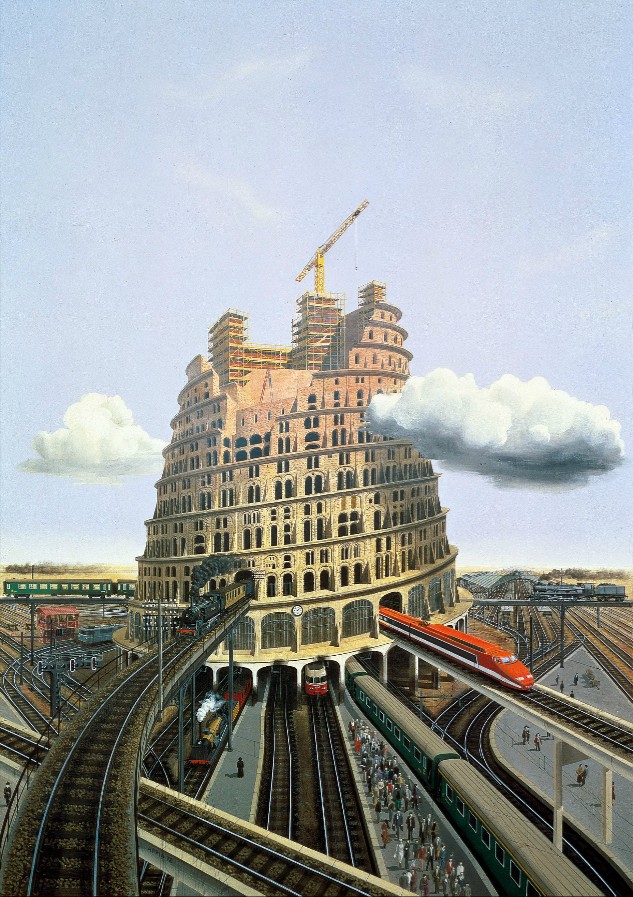Former property of….. by Antiquorum
Historical timepieces
In today’s auction market, the quest for proven and established provenance is all the more important. Not only is it a guarantee of security, but it is also a source of historical legitimacy. In many cases, these pieces bear witness to the courage and self-transcendence of extraordinary personalities. Today, Antiquorum is fortunate to be able to present in its next November auction in Geneva two fine and extremely rare wristwatches made unique thanks to their exceptional provenance : former property of Dr. Gabriel Chevalley and Mr. Dominique Appia.
Dans le marché actuel des enchères la provenance avérée et établie d’une pièce constitue un argument de vente important. C’est non seulement un gage de sécurité, mais aussi une source de légitimité historique. Dans de nombreux cas, ces pièces témoignent du courage et du dépassement de soi de personnages extraordinaires. Aujourd’hui, Antiquorum a la chance de pouvoir présenter dans sa vente du mois de novembre 2023, à Genève, quatre belles montres-bracelets rendues uniques de par leur provenance exceptionnelle, puisqu’ayant appartenues au Dr Gabriel Chevalley, leader de l’expédition suisse sur l’Everest à l’automne 1952, M. Alberto Parodi, géologiste célèbre pour son ascension du mont Solimana la même année, Dr. Mukwege, docteur congolais et prix Nobel de la Paix, et l’artiste genevois, M. Dominique Appia.
401928/1_Former property of Doctor Gabriel Chevalley (1918-1990)
Doctor Gabriel Chevalley
Gabriel Chevalley is one of those men who lived through almost a century, not just passing through it but shaping it by his actions.
Born in Bex in 1918, son of the director of the salt mines (Salines de Bex), his passion for mountain climbing started early as by age fifteen he was already climbing the “Bloc Monstre” and the “Pierre Bessa” not far from his family home as well as the Dents de Morcle (2969m). After studying at the college de Saint Maurice during which he became very close friends with the author Maurice Chappaz, he joins the Swiss army during the Second World War serving 509 days combining his medical studies and mountain climbing (he climbs the Weisshorn, Bietschorn among many others and most notably in 1950 he accomplishes his first Himalayan expedition by conquering the Abi Garmin (7355m) with Dittert, Tissieres and Berril). In 1948, he joins the CICR (ICRC International Committee for the Red Cross) working as a doctor in Lebanon then in Pakistan.
He was the Swiss doctor who accompanied the two expeditions to mount Everest in 1952. Both in spring and autumn. As a member of the team of climbers on the spring expedition, he risked his life to help evacuate the South Col. Amongst the amazing achievements made by the team (see below), one other extraordinary event mentioned in his diary was the operation at 6000m of the Sherpa Ang Norbu who was suffering from a neck tumor. Creating an operating table with 6 crates, he was sedated and Dr Chevalley proceeded to open his neck, remove the tumor and close the wound. The next day the Sherpa was already back on his feet. As leader of the second expedition, he took on heavy responsibilities during the period of stubborn waiting in the middle of winter storms. He was awarded this Rolex ref. 6098 by the manufacture for his involvement in these historic journeys.
After the expedition, he works at various hospitals (Loeche les Bains, Hospital Nestle and Lavey-les Bains. In 1958 he sets up his own practice in Bex where he served and lived until his retirement.
We are delighted to be able to offer the watch for sale, together with the accessories he used on the two expeditions, such as ice axes, sleeping bags and mountain clothing, …. as well as a significant amount of documentation about both the exploit and the period.
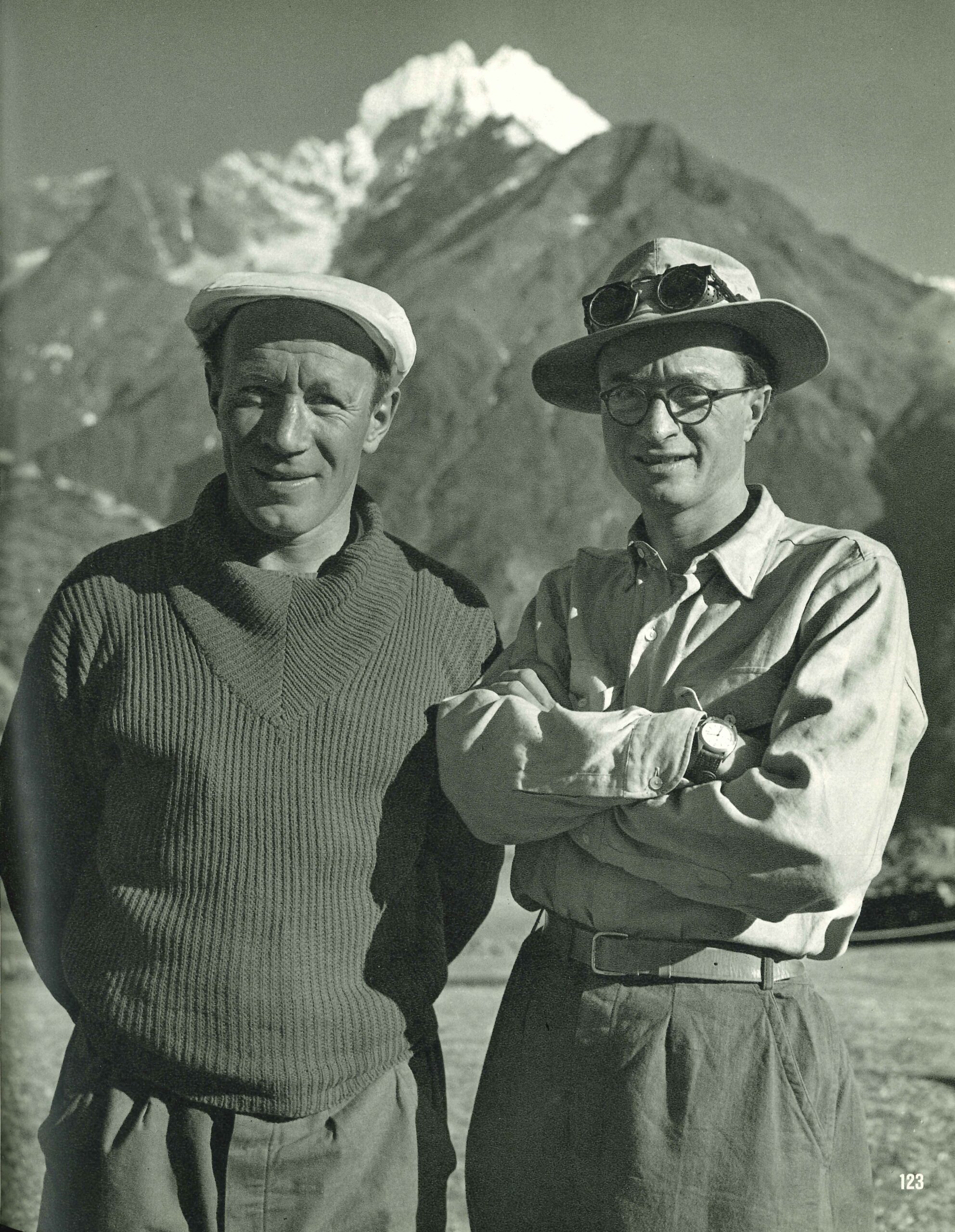
The 1952 Swiss Everest Expedition
Just like all explorers, the dream to conquer the impossible was always at the top of the list. The Everest culminating at 8’848m would naturally attract some of the most extreme explorers as the earth’s highest peak. Unavailable to foreign climbers until 1951, in 1952 the Tibetan government gave the Swiss the opportunity to attempt its climb to the top. The first fall ascent led by Edouard Wyss-Dunant would consist of 9 climbers (including Dr. Chevalley, Tanzing Norgay, Raymond Lambert). After spending a gruelling night at 8’400 meters, Norgay and Lambert attempted the final climb (with effectively non-working oxygen masks) only to have to stop at 8’595m setting the record for the highest ascent. The discoveries made in terms of new routes, conditions at high altitudes and equipment would ultimately qualify this attempt as successful and opened the path for the future.
Following that first attempt, a new Fall expedition was quickly organised this time led by Dr. Gabriel Chevalley but the extreme winds and cold prevented them making it to the summit. Importantly it was thanks to the maps and passages discovered by the Swiss team and the Sherpas that allowed the 1953 British expedition to conquer the Everest led by Hillary and Norgay. The Telegram sent by the British to the Swiss team after their conquest clearly gives credit to their exploits with this now legendary phrase ” To you goes half the glory”.
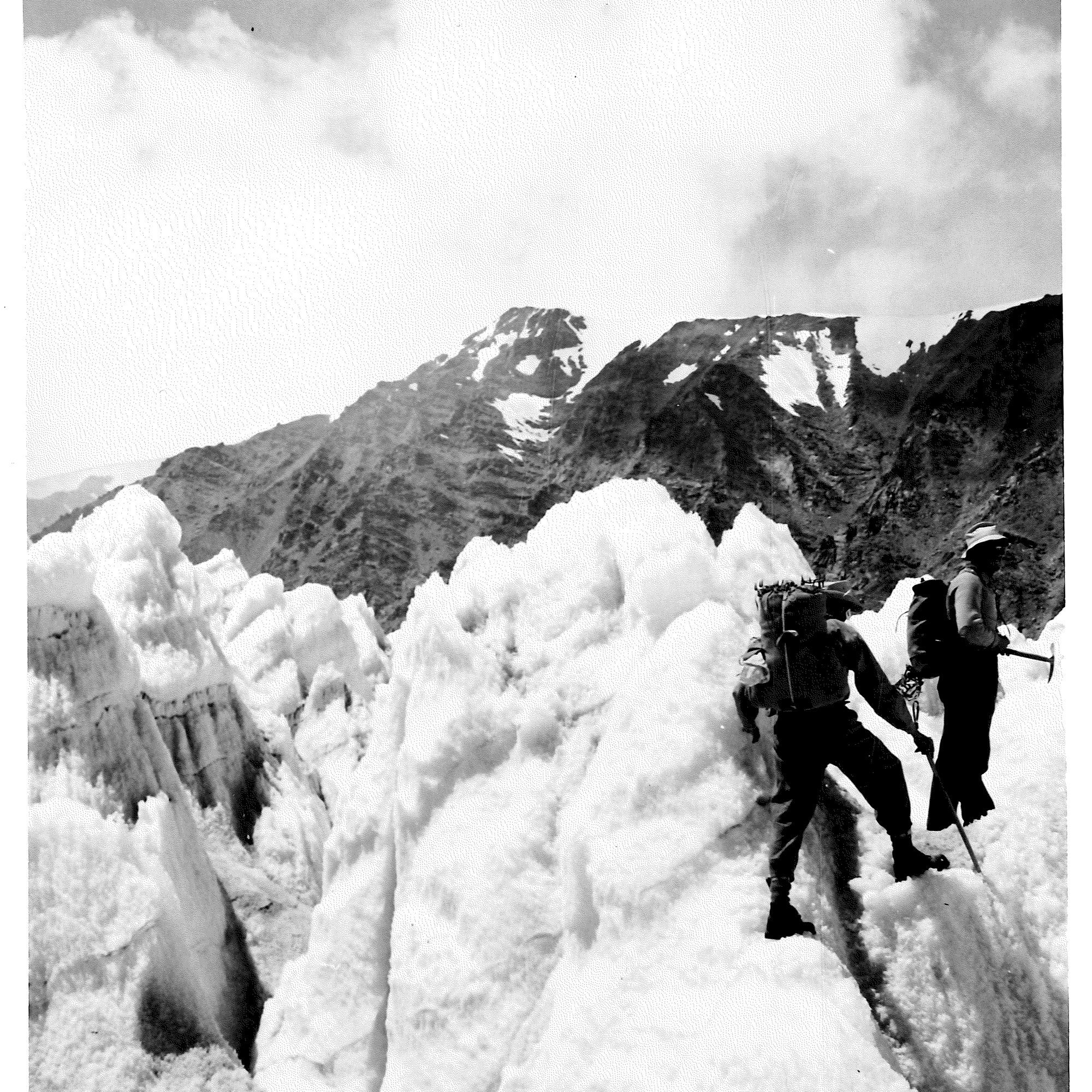
Rolex Ref. 6098, serial 846218
According to a Rolex advertisement in the Swiss foundation for Alpine Research published in 1953 (accompanied with the watch), Rolex equipped the 3 early 1952 Everest attempts by English, French and Swiss expeditions with 15 Rolex chronometer’s that we now know to be references 6098 as confirmed by the Rolex letter. With no traces of any other expeditions other than the Swiss, it seems more than likely that all 15 (maybe less) 6098’s were given to climbers only and not all team members wore them. We now know that most climbers wore 2 watches one on each wrist to test them during the expedition (as shown in some of the photos), we now know from talking with former family members that Rolex had equipped their wristwatches with 2 different types of oil to be tested under extreme conditions.
Amazingly the family conserved the letter they received from Rolex in 1953 confirming the return of both watches used during the expedition, as agreed (stamped on the back A7 and B7, we know that Norman Dyrenfurth, film maker of the 1952 fall expedition, had example B6) and the gift of the present watch in exchange.
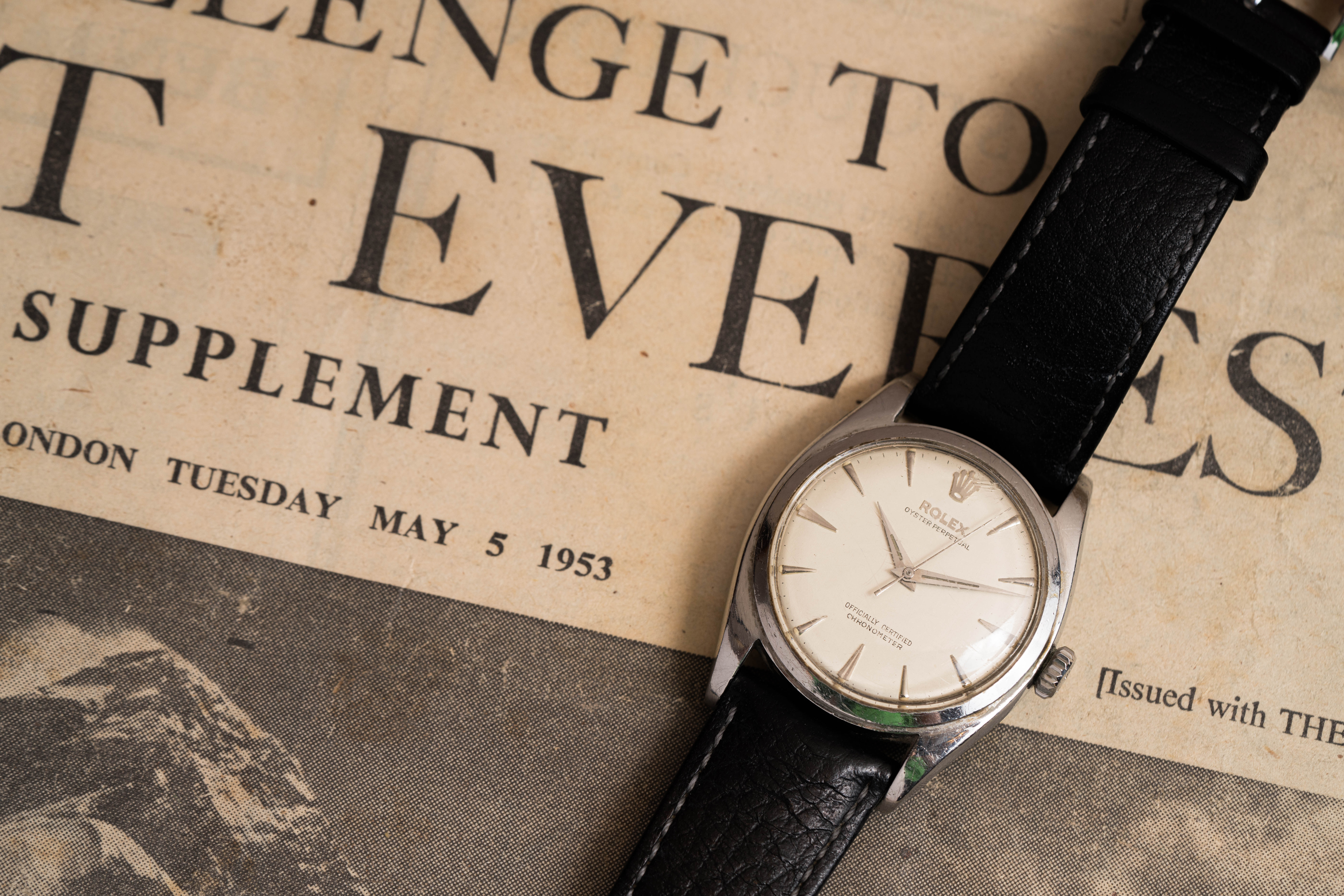
401948/1_Dominique Appia (1926-2017)
Rolex, ref. , day-date, lapis dial
The “Day-Date” model was launched in 1956 and this specific reference 18239 in the late 1980’s . It is one of Rolex most coveted “classic” models – in opposition to the “sports” models.
Known as the wristwatch worn by presidents, hence its nickname “President”, it was the first water-resistant and self-winding chronometer wristwatch to offer a modern calendar with an instantaneous day display, spelt out in full in a window on the dial, in addition to the date.
Exclusively crafted in precious metals, very few watch models come close to the stature, eminence and timelessness of the Rolex “Day-Date”.
After a successful launch, the Rolex Day-Dates have been produced in a wide range of colour variations from lacquered, engraved or hard stone dials. Due to their high cost models with hard-stone dial, such as lapis, malachite or coral, are extremely rare. Indeed, due to the complexity of assembling wristwatches hard-stone dials, many examples encompass hairline cracks after being fitted to a watchcase.
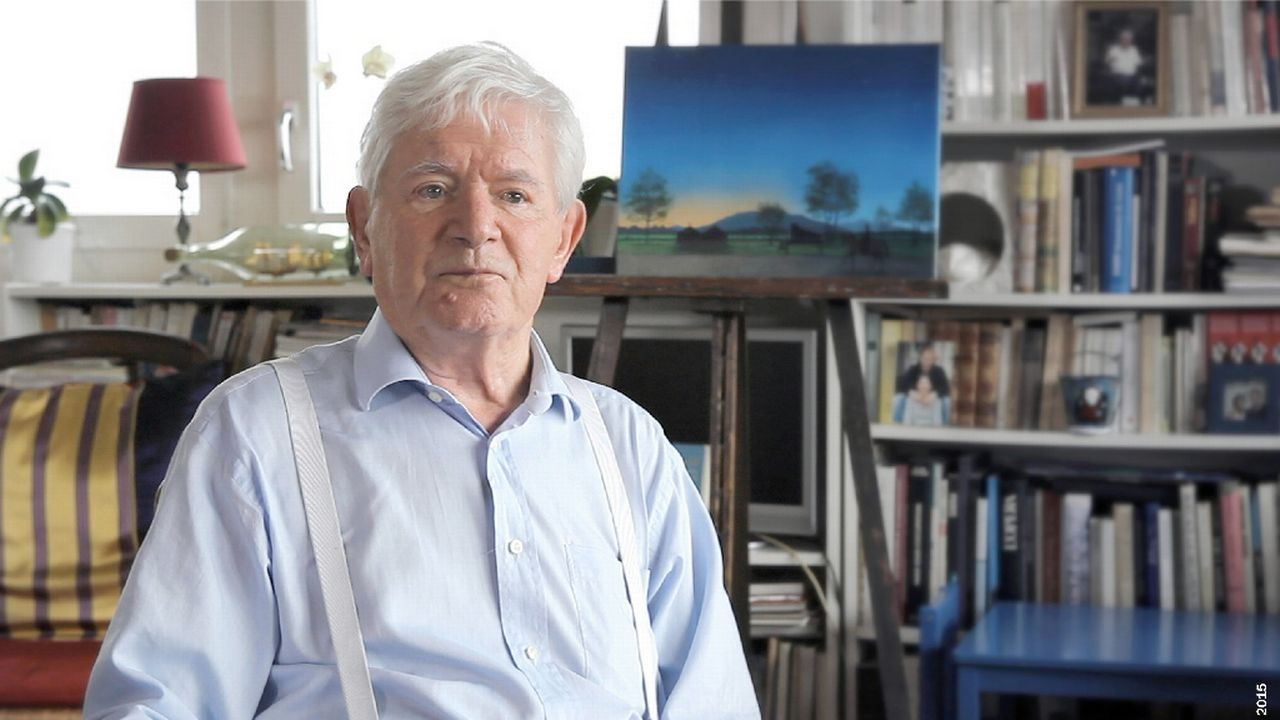
A prestigious provenance
Dominique Appia is a Swiss artist born in Geneva on July 29th 1926. His artistic vocation ran in the family, since his great-uncle was Adolphe Appia (1862-1928) was a famous architect and theorist of stage lighting and décor.
After various jobs, from hotel bellboy to taxi driver, he learnt about photographic editing and printing, before persevering for 15 years as a draughtsman in an architect’s office, where he was confronted with the challenges of precision drawings and respect for proportions. He really started his artistic career at the age of 40, completely self-taught.
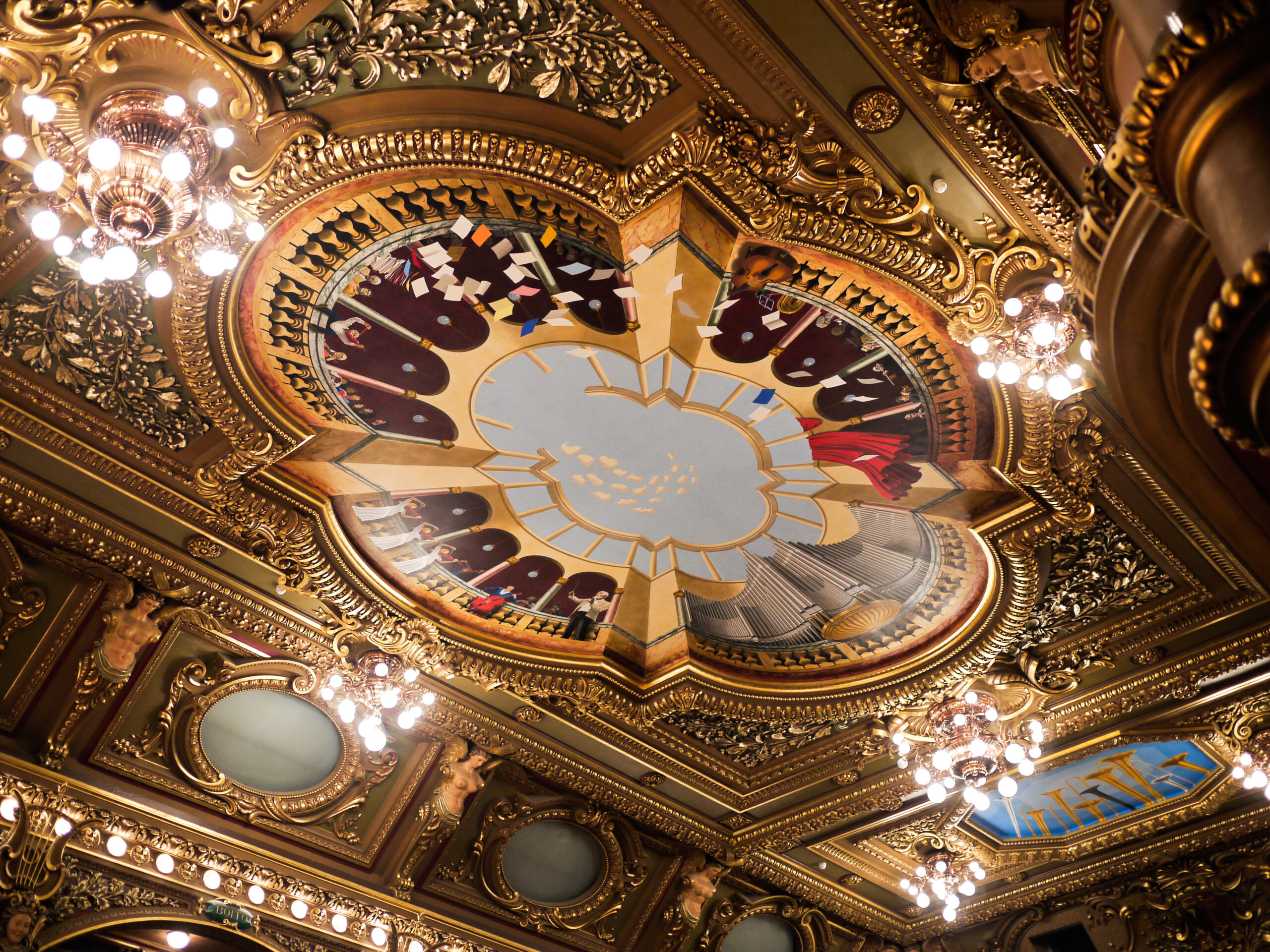
Fascinated by surrealism and the Renaissance, some of his most famous works can be found on the ceiling of the Victoria Hall in Geneva (1987) and at Rolex Geneva headquarters having designed some of the floors, murals and fountains, including 3 granit fountains, mosaic pool, 5 wall decorations (Phases de la Lune“, “Pendule de Foucault“, l'”Ecliptique“, “Plaisirs de la table“, et l'”Avenir de la tradition” (1994) and a granit floor labyrinth (1998) for which he was gifted this watch. The influence of Renaissance art is reflected in the taste for grandiose decorations and their integration into the architecture. From surrealism – he was greatly influenced by the Belgian Surrealists – an iconography suggesting dreamlike, oneiric, unusual and strange worlds.
He is also renowned for his work as an illustrator, a talent acquired during his years as an architectural drawer, whether for exhibitions or charities. In 1979, he won the Grand Prix de l’affiche française.
His work has been exhibited in the world’s greatest museums and fairs, notably the Rath museum in Geneva (1978 and 1979), the Centre Pompidou in Paris (1978, 1979, 1982 and 1988) and the FIAC, the International Contemporary Art Fair in Paris (2004).
A great lover of the city of Geneva, in 2013, he published Geneve : guide amoureux et sentimental pour les curieux (translation Geneva: a romantic and sentimental guide for the curious).
He pursued his artistic work up to the end stating in one of his last interview « Un artiste ne s’arrête jamais » (translation : “an artist never stops”). He died on January 8th, 2017, leaving his mark on Geneva’s artistic life.
